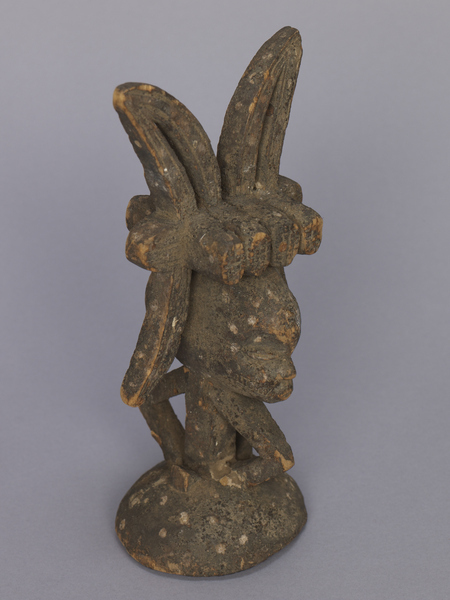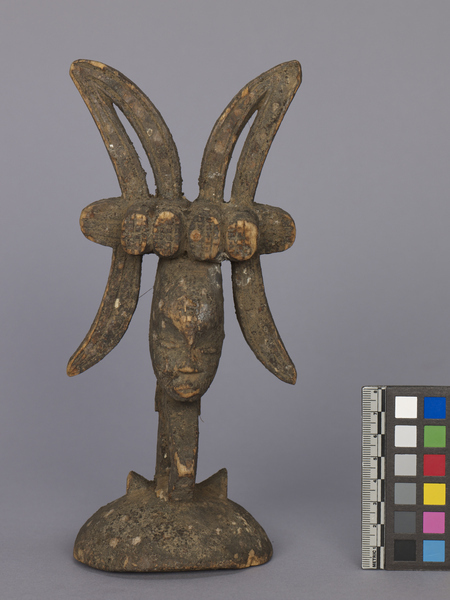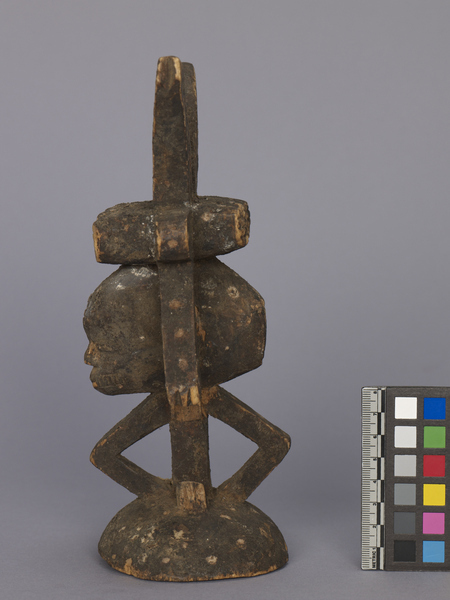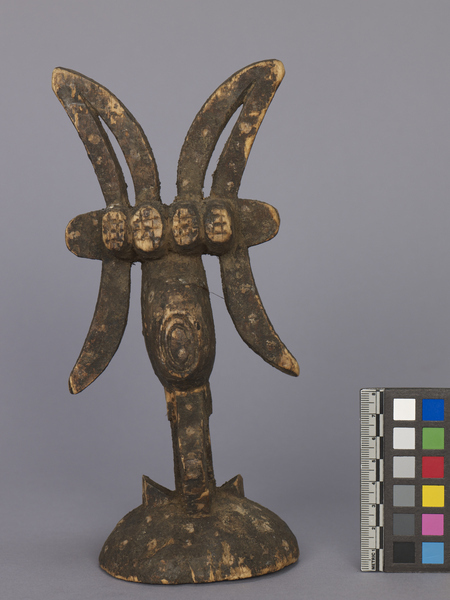Figure Item Number: 3055/16 from the MOA: University of British Columbia




Description
Wooden ikenga figure. The figure sits on a rounded base with two small carved triangular wedges on either side of the body. The figure’s body is a rectangular shape with stylized, squared arms branching out from the base of the head in v-shapes to attach to the base. There are two small square sections of raised wood either side where the body meets the head. The head is elliptical in shape, narrow and flattened. The face of the figure extends over the front arm and has slanting eyes carved on the sides of the head, rounded lips and nose, and a sloping, high forehead. The back of the head extends outwards over the back arm and is decorated with a spiral design. The top of the head is adorned with four connected cylindrically carved shapes with incised cross-hatching on the ends, and two large curved horns. The horns are curved at the top and have a hollow interior, while the bottom horns curve outwards from the body and are narrower and solid.
History Of Use
Ikenga (literally "strength of movement") is a horned spirit and one of the most powerful symbols for the Igbo people. Smaller figures were owned by individual men; larger ones were made for family and village shrines. Although taking on different forms, the figures always have a pair of ram’s horns, representing the animal’s strength and fortitude, characteristics like power, achievement and upward mobility, valued by men who regularly invoke them for success. Ikenga rarely stand alone; they appear on altars alongside other objects dedicated to chi or ndimmo (ancestors). This acknowledges achievements of individuals, as well as relationships with family and the creator. To affirm these relationships, the ensembles are given joint offerings. When ikenga do stand alone, sometimes in the sleeping quarters of their owners, the offerings they are given only acknowledge success in personal undertakings, such as hunting or trading expeditions. Annual feasts dedicated to ikenga provide further opportunity for the evaluation of personal achievement.
Item History
- Made in Nigeria
- Owned by Alan R. Sawyer before 2002
- Owned by Erika H. Sawyer before April 16, 2014
- Received from Erika H. Sawyer (Seller) and Museum of Anthropology Acquisitions Budget (Funding source) on April 16, 2014
What
Who
- Culture
- Igbo
- Previous Owner
- Alan R. Sawyer and Erika H. Sawyer
- Received from
- Erika H. Sawyer (Seller) and Museum of Anthropology Acquisitions Budget (Funding source)
Where
- Holding Institution
- MOA: University of British Columbia
- Made in
- Nigeria
When
- Ownership Date
- before 2002 and before April 16, 2014
- Acquisition Date
- on April 16, 2014
Other
- Item Classes
- carvings & sculpture
- Condition
- fair
- Accession Number
- 3055/0016